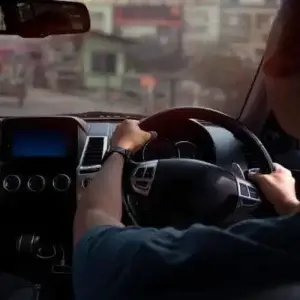Home / Compare Car Insurance / How to get cheaper car i…
How to get cheaper car insurance
Tips to reduce your car insurance premiums



Key takeaways
- Get the right cover for you so that you’re not overpaying for cover you don’t need or falling short on what you do need.
- Weigh up which optional extras can give you value for money.
- Choose an affordable excess that works for you and potentially brings down your premiums.
The dos of getting cheaper car insurance
Choose insurance that suits your car

For instance, if you drive an older car where the price of comprehensive cover would outweigh the market value of your vehicle, a more basic level of cover could be more suited to your insurance needs. This could be a policy like Third Party Property Damage (which only covers the damage you cause to other property) or Third Party Fire and Theft (which covers the same but with further, limited cover for your own car in the case of theft or fire damage).
However, another option could be to find a better-priced comprehensive car insurance policy, which can cover a much wider range of accidents, incidents and damages. Although comprehensive car insurance usually costs more than third-party insurance, you may still find a new policy within your price range.
Finding the right type of car insurance to suit your car is imperative to keeping down costs. A good way to search for policies that meet both your insurance and budget requirements is by comparing car insurance quotes with our easy-to-use comparison service.
Choose your optional extras wisely
Many car insurance providers allow you to pay for add-on benefits to increase your coverage, like windscreen excess waivers, roadside assistance and a hire car after an accident (e.g. if your car is written off or needs repair after an accident). However, while these extras can provide more coverage, they’ll also increase your premiums. If saving on your premiums is your first priority, you’ll want to carefully consider which – if any – optional extras you add to maximise your value for money.
Choose your excess amount
If this option is available to you, choosing a higher excess is one way of getting a cheaper premium on your car insurance policy. While the aim is to pay a lower price for your cover, it’s important to consider this carefully and make sure you choose a manageable excess amount, as your excess is what you may have to pay out of your pocket if you need to make a claim.
Consider a low-kilometre policy
Some policies offer a reduced premium for those who drive less than a specific number of kilometres per year. If you’re on the road less, you’re less likely to have an accident and make a claim, which could lower your premium.
Whatever your life situation, think about how much you use your car in a year and check with your insurer to see if you qualify for a low-kilometre policy.
Install security devices
Security devices and safety features such as alarms, dash-cams and immobilisers could help you get cheaper car insurance. Since they help reduce the risk of an incident by giving you more tools to keep you safe or deter thieves, insurers may offer you a lower premium as a result.
Further to this point, parking your car safely at night, like in a locked garage or undercover parking, can help to reduce your overall cost of car insurance. Parking securely lessens the risk of theft, vandalism or damage from a weather event (like hail) than if your vehicle was parked on the street.
The don’ts of getting cheaper car insurance
Don't make yourself a target for thieves
Always take the necessary precautions to ensure your car isn’t a target for theft. These include (but aren’t limited to):
- Choosing a secure, well-lit location when parking away from home (monitored parking garages are great) instead of down a dodgy laneway.
- Not leaving valuables such as laptops, phones, purses or wallets in your unattended vehicle or on the back seat in plain sight to a passer-by.
- Not leaving loose change in a visible place inside your car.
Don't leave your policy open for any driver

Restricting the age of drivers on your policy can help reduce your premiums and potential additional excesses. If you nominate all drivers to be over the age of 25, for example, you can save on higher premiums as younger drivers are typically more expensive to insure.
As long as no one younger than your nominated age restriction drives the car in an incident, you could save paying an inexperienced and young driver excess on top of your standard excess. Plus, some car insurance policies may include an excess for unlisted drivers which could apply to anyone who isn’t a listed driver who was behind the wheel during an incident. In some cases, no cover will exist at all for unlisted drivers. Be sure to review the policy’s Product Disclosure Statement (PDS) to know exactly how it covers listed/unlisted drivers as well as any exclusions.
Don't drive carelessly on the roads
Not only is it vital for the safety of you and every other motorist on Australian roads, but maintaining a good driving history may help you avoid paying more for your insurance. A bad driving record may mean car insurance companies will charge you more on your insurance premiums. Overall, being a safe driver with a safe driving record influences your no claims discount (NCD) rating.
Don’t claim excessively
Since each claim you make may affect your premium at the time of renewal, weigh up the cost of paying for repairs outright should your car have minor damage (like a scratch). Sometimes it might end up being cheaper than your excess to pay for repairs yourself than to make an insurance claim. Claims you make may impact your no claims bonus, and potentially increase your premiums.
In the long run, the amount you may save through a good NCD rating could be more than the savings made through claiming a windscreen chip, for example.
So, definitely claim on your insurance when necessary – that’s what it’s there for – but be smart and strategic about when and what to claim to protect your future premiums.
Don't just renew without comparing
Reviewing your cover and looking for a better deal is something you can do every year to reduce your car insurance premiums or to find a policy that you’re happier with. Comparing what’s out there and taking control of your finances will always be one of our biggest tips on how to save money on car insurance. It can also help you determine if you’re still getting value from your current cover.
Meet our car insurance expert, Adrian Taylor
As a General Insurance expert with over 13 years’ experience in financial services, Adrian Taylor is passionate about demystifying car insurance for consumers, so they have a better understanding of what they’re covered for. Adrian’s goal is to make more information available from more insurers, to make it easier to compare and save.

